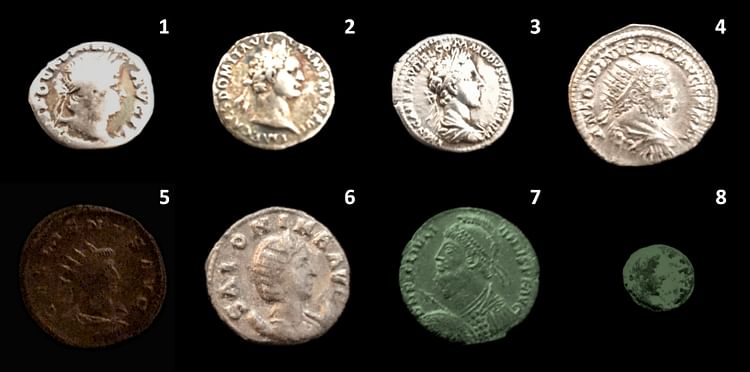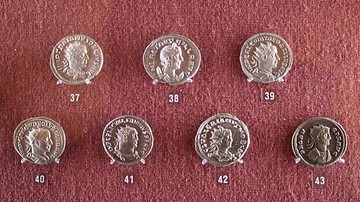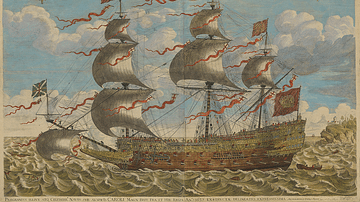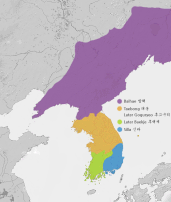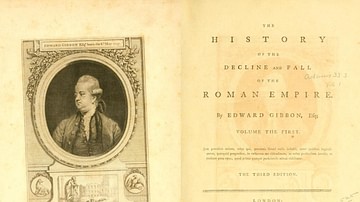Unlike the practice of professional numismatists, I prefer to see the “big picture”. So, my entire Roman coin collection, all 250 pieces, from Julius Caesar to Valentinian III is laid out on a single pane of glass in a cabinet, in chronological order. In an instant, in almost a single glance, I can take in hundreds of years of Roman history, and dozens upon dozens of rulers. One characteristic of the Roman Imperial coinage is easily seen when viewed this way; the relentless debasement of the silver denarius, the workhorse currency of the Empire, a coin about the size of an American dime.
Augustus (r. 27 BCE - 14 CE) minted a relatively pure denarius, with a silver content of about 95-98% (a fineness of .95-.98). The silver content of the denarius remained roughly constant through the reign of his great-grandson Nero (r. 54-68 CE, coin 1), and into the reign of Emperor Domitian (r. 81-96 CE), of the Flavian Dynasty, in the late first century CE (coin 2). By the time of Marcus Aurelius (r. 161-180 CE) and his son Commodus (r. 180-192 CE, coin 3), about a century later, the fineness of the denarius was about .8. During the reign of Septimius Severus (r. 193-211 CE), the fineness dropped to only .5. In other words, denarii that were supposed to be nearly 100% silver were now only about half that much. By then, coins contained about 50% tin or zinc, or any other white metal the mint had to hand. (Eventually, as the fineness dropped even further, the Imperial mint began to admix copper into the coins).
Coins that are pure silver reflect ambient light differently than those with much lower fineness. It is easy to see. As you would expect, they also tarnish very easily, especially in the acidic air present in most contemporary large cities. And if you place several in a small leather pouch and shake them, I'm convinced the pure silver coins jangle with a slightly different sound than do those of low fineness! (I tried the same non-controlled experiment with several older American quarters vs. the new low-silver issues. The results were identical! The higher the fineness of the coin, the duller the jangle! But please do not extrapolate the state of Roman finances in those years to our own situation in the 21st century CE. The economics of the two societies are vastly different.
In the year 215 CE, Caracalla (r. 211-217 CE), the son of Septimius Severus, introduced the antoninianus (coin 4, on which there is a radiate crown which, in addition to its larger size, differentiated the antoninianus from the denarius). The value of the antoninianus was pegged at two denarii by the government, but it actually contained only 1.5 times the silver weight as the older coin (Caracalla skimmed off the extra money to pay his troops). The antoninianus also produced inflation, as prices increased in compensation.
By the reign of Emperor Philip the Arab (r. 244-249 CE), the fineness of the antoninianus was down to about .45-.40. After him, the fineness declined precipitously in the early 250s CE (to about .20) and then disastrously so, to .05, during the time of Valerian (r. 253-260 CE) and his son Gallienus (reigned 253-268 CE, coin 5). By that time, which my collection demonstrates in an instant, the silver denarius was long gone, replaced by the now bronze antoninianus (coin 6), which often contained a mere silver wash covering its surface. In ancient times, as now, this fooled no one. But the emperors had run out of silver bullion. The Spanish mines were exhausted, and there was no one left to plunder. Thus, the Romans were forced to abandon the silver coinage, and with it, any control of prices, which proceeded to rise 1000% in many parts of the Empire.
But what of the people of the Empire who lived under these dreadful economic conditions? How did they fare? The answer seems to be very poorly, similar to the people of any society experiencing hyperinflation (the example of Germany in 1923 CE comes to mind, though in Germany it was of much shorter duration than in the Empire). Small landholders could not obtain mortgages unless they were paid for in gold, which did not inflate in value nearly as fast as the antoninianus.But most of the available imperial gold was used to pay the troops, which had expanded greatly in number from the time of Augustus (about 200,000) to that of Diocletian (r. 284-305 CE; about 600,000), or to pay off the barbarians, who would not accept any other metal but gold. (They apparently were economically astute barbarians).
The government also began to demand its taxes either in kind, or in gold, and eventually in gold only, effectively repudiating its own bronze currency. Sometimes, the Imperial tax collectors even refused to accept gold coins, demanding bullion instead, as they were uncertain to what extent the gold coins had become adulterated.
As a result of the hyperinflation, the Empire's small landholders lost their land to those who were already large landowners and became their tenants. Eventually, in many parts of the Empire, their descendants, in time, became serfs. The Empire, in many places, reverted to a barter economy. But if you were poor and had nothing to barter, chances were that you might starve. It is thought that one of the reasons for the explosive growth of Christianity during this time is because Christians took care of their own throughout the hyperinflation and the other disasters that beset the Romans.
In the midst of this economic chaos, the Roman Empire cracked into three roughly equal parts. The Western regions of the old Empire became the so-called Gallic Empire, and the Eastern area of the Empire fell under the control of the redoubtable Zenobia, Queen of Palmyra (b. 240 CE). I have coins from several of the rulers of the Gallic Empire, but a coin of Zenobia, which I'd love to get my hands on, is far out of my price range, worth many thousands of dollars.
The old Empire did strike back, and was knitted together again in the 270s CE by a group of capable, no-nonsense generals led by Emperor Aurelian (r. 270-275 CE). One of the reasons things held together at all was that the gold coins, those beautiful but frightfully expensive aurei, and their later replacements, those solidi that I will never possess, held their value relatively well. The Empire was thus always able to pay its soldiers, and eventually re-absorbed the Gallic Empire and defeated the forces of Queen Zenobia. But the damage done to the Western Empire was never really repaired.
A reform in the currency was inaugurated in the early part of the 4th century CE, but during and after Constantine I (r. 306-337 CE) inflation, which had never ceased, became hyperinflation once again, and the bronze coinage all but worthless (see coin 7 from the reign of Julian II, 361-363 CE, called the apostate for his renunciation of Christianity. So many of these so-called centenionalis coins were minted that even now, more than 1600 years later, one can be purchased online for about $30).
After the Sack of Rome by the Goths (410 CE), the coinage deteriorated into 8 mm specimens (see coin 8 from the reign of Valentinian III, 425-455 CE) that were light years from the works of art of the early Imperial period. But perhaps by then the Romans had learned how to navigate a virtually money-less economy. People, it appears, will always find a way.
